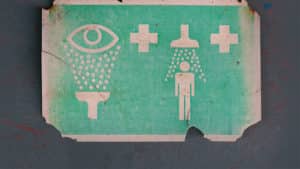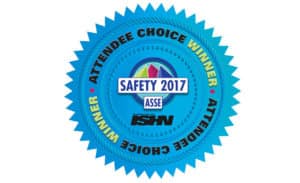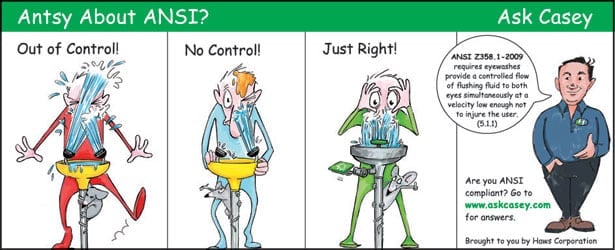[via LabManager.com]
ANSI standard Z358.1 is detailed in terms of defining what is appropriate for safety showers and eyewash stations.
As lab managers and employees, we know that many inorganic chemicals (such as the mineral acids and alkalis) are corrosive to the skin and eyes. Likewise we are aware that many organic chemicals (such as acid halides, phenols, and so on) are corrosive and often toxic. Yet we Safety Guys are continually shocked by laissez-faire attitudes toward the use and maintenance of basic safety equipment by lab personnel, and the resultant unnecessary injuries.
One extreme example we constantly recall is the tragic UCLA accident just a few years ago, which resulted in a fatality from chemical burns.1 And we recently noticed a post on the American Industrial Hygiene Association pages for Lab Safety Chemical Exposure Incidents, where improper use of an eyewash resulted in a trip to the emergency room.2
The worker was using a fluorescent stain in the cytogenetics lab and felt something splash into his eyes. He was not wearing safety goggles or glasses. (D’oh!) Long story shortened, he flushed his eyes at the nearest eyewash, but they remained irritated and began to swell shut, necessitating a visit to the emergency room. Back at work a few days later, he noticed a coworker using the same eyewash to clean glassware and stainless steel trays, which were left resting in the sink in a cleaning solution. (What?!)
What does OSHA say?
In 29 CFR 1910.151 Medical Services and First Aid, it states that “where the eyes or body of any person may be exposed to injurious corrosive materials, suitable facilities for quick drenching or flushing of the eyes and body shall be provided within the work area for immediate emergency use.”3 OSHA doesn’t provide more specifics regarding what constitutes “suitable” or how “immediate” is defined. So how do we know if we are meeting the intent of the law?
Fortunately, we have the American National Standards Institute (ANSI), and their consensus standard Z358.1, last updated in 2014. This ANSI standard is very detailed in terms of defining what is appropriate for safety showers and eyewash stations. In fact, OSHA uses this reference as a guide when inspecting facilities. So let’s review what is “recommended” for acceptable safety equipment.
Safety shower specs
Begin by checking your facilities for the proper hardware, as recommended by Z358.1. Rest assured that OSHA will, should one or more agents show up for an inspection. For safety showers, the shower head must be capable of flowing 20 gallons per minute (gpm) at 30 psi and producing a 20-inch diameter spray pattern at 60 inches above the surface where the user stands. The center of the sprayhead pattern should be at least 16 inches from any wall, door, or obstruction. It is recommended that the shower head be mounted between 82 and 96 inches off the floor, with the valve no higher than 69 inches.
Eyewash specs
Eyewash stations target just the eyes and therefore have a lower flow requirement. ANSI Z358.1 recommends a flow of 0.4 gpm also at 30 psi. The nozzles should be at least six inches from any obstruction and mounted between 33 and 45 inches above the floor. An eyewash gauge should be used to verify and test the flow pattern.
Requirements for both
Both safety showers and eyewash stations must be able to provide the recommended flow for at least 15 minutes. This usually translates into having the equipment plumbed in with hard connections to the water supply. For example, a quick calculation for the safety shower at 20 gpm yields 300 gallons needed. Self-contained or personal wash devices are allowed, but they are considered supplemental units that can provide immediate flushing while transiting to the permanent fixture.
If the local climate presents potential for freezing conditions, the equipment must be designed to avoid freezing or protected against that situation. Activation valves must open within one second and remain open until intentionally closed or turned off. It goes without saying that these safety devices should be constructed of corrosion-resistant materials.
The 2014 update to Z358.1 added two important criteria. The first is that the requirement for tepid water is now defined as having a temperature of between 60 and 100 degrees Fahrenheit (15 to 37 degrees Celsius). The second change addresses simultaneous operation for combination units. This means that if you have a drench shower combined with an eyewash station, both devices must provide adequate flows and be fully operable at the same time.
Finally and most importantly, consider the location of equipment. We know you have the 10-second rule etched into your brain, as that is the most critical element when it comes to safety showers and eyewashes. This means that travel to the unit should be under 10 seconds for all hazardous areas that need this equipment. This equals about 55 feet. In addition, the drench shower or eyewash must be on the same level as the hazard and have a clear path for travel. We recommend painting or marking the floor area underneath the shower to help keep it clear. Z358.1 also recommends equipment be installed in a brightly lit area and marked with a highly visible safety sign.
Maintenance and training
The last thing you want is to rush to the eyewash or shower, only to be drenched with nasty, sediment-laden water. ANSI recommends flushing all equipment weekly to verify proper flow, and clearing the plumbing of any deposits. If your facility does not have floor drains installed, remember to bring a large, plastic trash can to catch the water. The weekly flushing can also provide a great training opportunity to refresh the operation and travel paths for your employees.
If you want to find out about the ANSI/ISEA Z358.1 significant requirements, attend our free 1-hour webinar on September 21st, 2017.
Register now and become subject matter experts of your emergency eyewash and shower equipment including weekly and annual testing. Request a certificate of attendance after the webinar.
This free webinar will cover:
• ANSI/ISEA Z358.1 significant requirements
• Important 2014 revision highlights
• Compliance best practices
• Live Q&A
WHAT: All You Need to Know About ANSI Z358.1 Webinar
WHEN: September 21, 2017 from 10am-11am PT / 1pm-2pm ET
PRESENTER: Justin Dunn, Product Specialist/Trainer and Samantha Hoch, Marketing Strategist
HOW: Register for free
Attendees will receive these complimentary materials after the webinar:
• OSHA white paper
• Weekly and Annual ANSI Checklist
• Access to On-Demand Webinar
References
1. “tert-Butyllithium Claims Fellow Chemist at UCLA,” Chemistry Blog, January 19, 2009, http://www.chemistry-blog.com/2009/01/20/tert-butyllithium-claims-fellow-chemist-at-ucla/.
2. “Lab Safety Chemical Exposures Incidents,” American Industrial Hygiene Association, https://www.aiha.org/get-involved/VolunteerGroups/LabHSCommittee/Incident%20Pages/Lab-Safety-Chemical-Exposures-Incidents.aspx.
3. “Medical Services and First Aid,” US Department of Labor, Occupational Health and Safety Administration, https://www.osha.gov/pls/oshaweb/owadisp.show_document?p_table=STANDARDS&p_id=9806.
Haws Receives Safety 2017 Attendee Choice Award
ISHN’s annual hands-on safety and health products and services awards – a complement to the Reader’s Choice Awards — are based on voting by attendees at the American Safety of Safety Engineers (ASSE) annual professional development conference.
Haws is proud to announce that our Tempered, Gravity-Fed, Portable Eyewash model 7501T is a winner in the category of Emergency Eyewashes at this year ASSE Safety 2017 conference Attendees Choice Award.
Model 7501T is a compact portable tempered eyewash and is ideal for remote locations. The 9-gallon (34 L), gravity-fed, eyewash uses a heated, insulated blanket to provide ANSI compliant tempered potable water in operating temperatures between -30° F (-34° C) and 100° F (38° C) for locations without access to a continuous potable water source. The self-contained heating blanket electrical system uses NEMA 3R rated components. 120V electrical requirement with supplied 8′ power cord.
- Featuring an FDA approved high-density green polyethylene tank easily activated by pulling the yellow activation arm down to the open position
- A wide-fill opening with threaded cap permits easy inspection, cleaning, and filling
- Relocation is simple due to the easily mounted bracket (included) and light design of this 9-gallon (34 L) portable
To see a complete line of Portable Eyewash solutions visit our website.
Haws Supports United Association International Apprentice Contest
UNITED ASSOCIATION PLUMBERS AND PIPEFITTERS INTERNATIONAL APPRENTICE CONTEST 2015
“The United Association International Apprentice Contest involved 7 apprentices; 5 from the United States in 5 different regions, 1 from Canada, and 1 from Australia. The contest is a 5 day event beginning at 7:30 am each day and concluding at 5:00 pm. Each candidate must complete 100 questions on the theory of plumbing, principles of plumbing code, all within a specified time limit. Next the candidates perform hands on layout of sleeves, plumbing fixtures, piping, piping supports according plumbing print presented to each candidate. Last the candidate’s final set fixtures, assemble piping as related to waste, vents, and domestic water piping comprised of cold water, hot water, and tempered water. Each piping assemble consists of various type of joints.
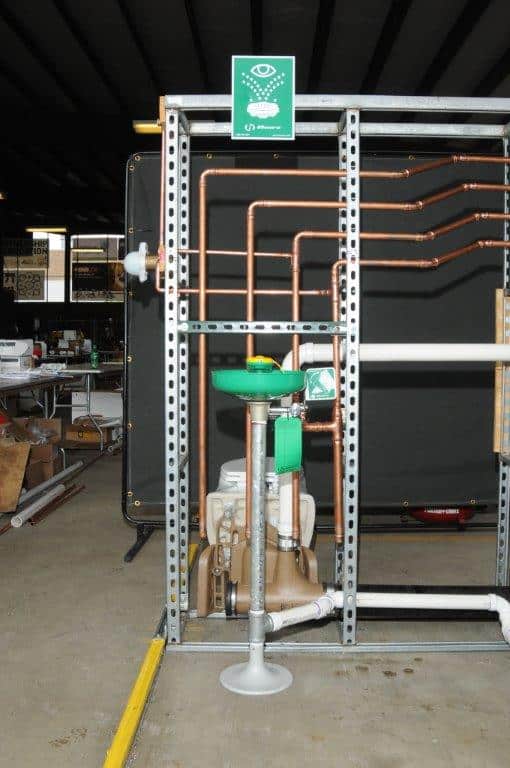 In reference to the Haws emergency eye/face wash model 7261-7271, each candidate was required to verify the exact location of the fixture according to prints presented, secure the fixture to the floor, install the drain piping to the plumbing system, install a tempered water solution to the eye/face wash fixture. Once completed, the plumbing judges would verify all dimensions, inspect all piping to ensure it was installed in a workmanship manner; i.e. straight, level, plumb. Each candidate received a point value for proper installation of the fixture, piping to the fixture, and proper securing of pipe supports. Last the OSHA certified inspector witnessed proper installation of the emergency eye/face wash.
In reference to the Haws emergency eye/face wash model 7261-7271, each candidate was required to verify the exact location of the fixture according to prints presented, secure the fixture to the floor, install the drain piping to the plumbing system, install a tempered water solution to the eye/face wash fixture. Once completed, the plumbing judges would verify all dimensions, inspect all piping to ensure it was installed in a workmanship manner; i.e. straight, level, plumb. Each candidate received a point value for proper installation of the fixture, piping to the fixture, and proper securing of pipe supports. Last the OSHA certified inspector witnessed proper installation of the emergency eye/face wash.
In closing, this is the first time that the International Al Apprentice Committee incorporated the emergency eye/face wash into the contest. It was a great addition to the contest and we will again continue to utilize the Haws emergency eye/face wash as an integral part of the 2016 contest as well as future years. The United Association sincerely appreciates donation to the contest and will continue to display the Haws banner as an important sponsor of the contest.”
Jerome D. O’Leary
Apprentice Contest Chairman
For more than a century, Monongahela Valley Hospital (MVH) has served Pennsylvania’s mid-Monongahela Valley with an emphasis on quality care and compassionate caring. The 226-bed, full-service health care facility maintains a staff of more than 1,000, making it the largest employer in the valley. The hospital remains steadfast in its commitment to meeting the needs of not only its employees, but also the thousands of patients that visit annually. 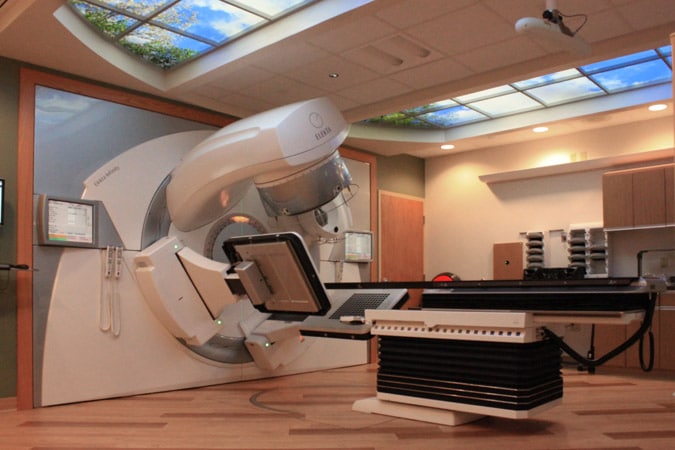 As part of a large renovation at MVH, one of the hospital’s laboratories relocated to a new facility. The project’s architects took full advantage of this opportunity to upgrade the lab’s safety equipment to ensure the safety of the hospital staff. They wanted reliable products that worked on several levels – efficiency, innovation, compact size and ease of use – while also meeting stringent OSHA and ANSI standards.
As part of a large renovation at MVH, one of the hospital’s laboratories relocated to a new facility. The project’s architects took full advantage of this opportunity to upgrade the lab’s safety equipment to ensure the safety of the hospital staff. They wanted reliable products that worked on several levels – efficiency, innovation, compact size and ease of use – while also meeting stringent OSHA and ANSI standards.
After evaluating the scope of emergency products on the market, both the Haws® AXION® MSR eye/face wash and AXION MSR combination eye/face wash and shower proved ideal. As leading safety products, they fell perfectly in line with the hospital’s commitment to quality and staff/patient satisfaction. A revolutionary inverted flow design makes the AXION MSR eye/face wash the only product on the market consistent with EMT and emergency room protocols, while the combination eye/face wash and shower offers a hydrodynamic design with regulated water flow that ensures maximum effectiveness in an emergency situation. Integral flow controls and easy activation are additional standout features.
In selecting the Haws products, MVH offers a response that concentrates on victim comfort while exceeding the ANSI Z358.1 standard requirements. “The units work well,” and staff has found them “easy to start, especially… in a hurry,” says MVH Laboratory Supervisor, Betty Ritzer. The eye/face wash has been used once, with very positive feedback, and Ritzer’s weekly maintenance checks have her sold on the safety equipment’s quality. AXION’s ground-breaking technology continues to change the emergency response landscape by offering the only eye/face wash duplicating the methodology recommended and used by medical professionals. The AXION MSR eye/face wash and shower provide superior safety technology for use in labs, schools and healthcare offices and are available in a variety of configurations and install options. All AXION MSR products are certified by CSA to meet ANSI Z358.1.
To download or print the case study, click here.
Safety Tip: Product SuitabilityIs your facility in need for new emergency equipment? Before investing the time and money in buying new equipment, it is critical that the correct product is sought after. Perhaps you work at a chemical plant and the risk of hazardous chemicals to be splashed in the facial area is high. The best solution in this case is an eye/face wash rather than just an eyewash that will only cleanse the eyes and not the face as well. Chemical reach may not only harm the eye area, which is why an eye/face wash is the best solution.
Once you have identified the proper type of equipment to invest in, refer to the ANSI Z358.1 standard for training, testing, installation, maintenance, location, and use. Here is a quick reference guide to what is expected out of each category of emergency equipment:
- Eyewash: Efficient to injuries affecting only the eyes. Must have a simultaneous, uninterrupted, and controlled flow to both eyes.
- Eye/face wash: Risk of injuries include the entire face as well as eyes. Must have a large enough dispensation of water to reach both the eyes and face.
- Emergency shower: Used when a greater area of the body is at risk of injury. Water must cover a larger portion of the body and can also be used simultaneously with an eye wash or eye/face wash.
Find the emergency equipment that best suits your workplace here!
Helping avoid unnecessary OSHA finesIn June of this year, an insulation plant in Phenix City, Alabama was fined $27,500 by OSHA solely for not having a sufficient place, such as a wash station or shower, to flush fluids from the body in an emergency. In this case, the plant had been cited previously, which resulted in the large fines they received.
Unfortunately, this case is not unique. OSHA fines are detrimental but can be avoided by staying proactive with emergency response best practices. So why aren’t more companies following the ANSI guidelines and avoiding these potentially large fines? Feedback has told us that equipment can be expensive or difficult to replace.
Recently, Haws® launched the AXION Advantage a retrofit system designed to upgrade existing units to an ANSI compliant solution. The cost-efficient system can fit on many competitive emergency eyewash or shower units with technology that improves your emergency response option.
Upgrading old equipment in your facility is easy, simply remove the existing head, select one of the supplied connectors, and attach the new (compliant) AXION Advantage head. Included in the system is a complete ANSI testing kit to help walk you through the final steps of compliance. Small steps to avoid big fines.
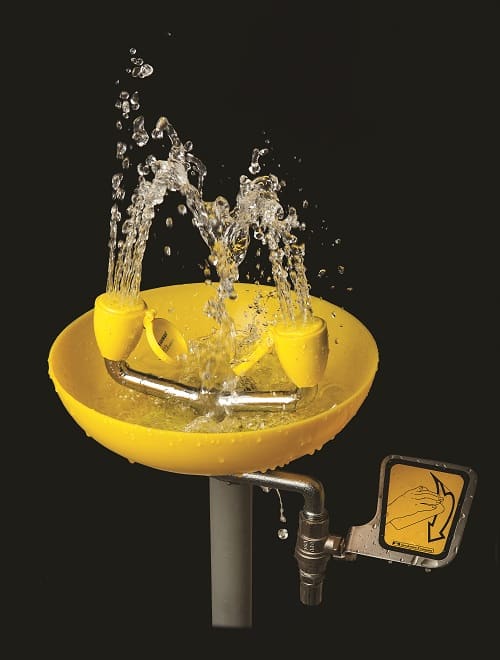
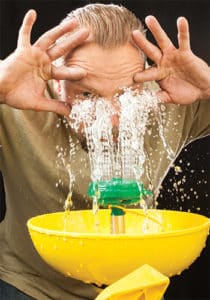
Here are some helpful ANSI Z358.1 facts on requirements for your emergency equipment:
- Emergency wash unit must be accessible within 10 seconds
- Unit must be free of obstructions and also on the same level as the hazard
- Be identifiable through highly visible signage
- Deliver tepid fluid for a full 15 minutes
